 W
WThe East India Company Military Seminary was a British military academy at Addiscombe, Surrey, in what is now the London Borough of Croydon. It opened in 1809 and closed in 1861. Its purpose was to train young officers to serve in the East India Company’s private army in India.
 W
WRAF Manorbier was a Royal Air Force airfield located near the village of Manorbier in Pembrokeshire, Wales. The site was first used in 1933 as mixed civilian/military airfield and was the base for ‘Y’ Flight of No. 1 Anti-Aircraft Co-operation Unit RAF in 1937, using de Havilland DH.82 Queen Bee unmanned radio-controlled target drone.
 W
WThe Army Foundation College (AFC) is located in Harrogate, North Yorkshire, England. It is the only British Army establishment that delivers initial military training to Junior Soldiers.
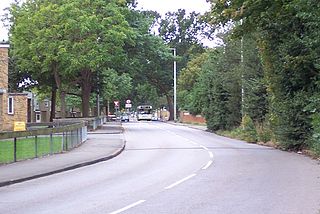 W
WThe Army Training Centre (ATC) at Pirbright in Surrey provides Phase 1 military training for elements of the British Army.
 W
WBarry Buddon Training Area is a Ministry of Defence-owned rifle range and training area located in Barry, Angus, Scotland, which runs adjacent to Carnoustie Golf Links and the Dundee - Aberdeen railway Line.
 W
WBovington Camp is a British Army military base in Dorset, England. Together with Lulworth Camp it forms part of Bovington Garrison.
 W
WBramley Training Area is a British Army training camp, located south of the village of Bramley, Hampshire. Opened during World War I as an ammunition depot, the site now serves wholly as a training facility.
 W
WCape Wrath is a cape in the Durness parish of the county of Sutherland in the Highlands of Scotland. It is the most north-westerly point in mainland Britain.
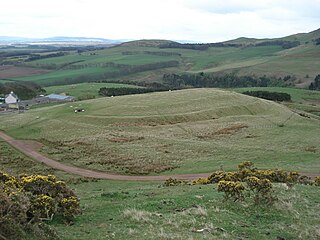 W
WCastle Law is a hill south west of Fairmilehead in the Pentland Hills in Midlothian, Scotland.
 W
WThe Castlemartin Training Area is located within the Pembrokeshire Coast National Park at Castlemartin, Pembrokeshire, Wales. It is owned by the Ministry of Defence (MoD) and covers 6,000 acres
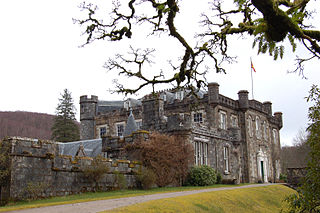 W
WThe Commando Basic Training Centre was a British Army training establishment primarily for the training of British Commandos during the Second World War. It was located in the grounds of Achnacarry Castle in the Scottish Highland region of Lochaber.
 W
WThe Dartmoor Training Area (DTA) is a military training area on Dartmoor in Devon in southwest England. The area consists of approximately 13,000 hectares in the Dartmoor National Park.
 W
WThe Defence Animal Training Regiment (DATR) is a training establishment, based in Melton Mowbray, east Leicestershire. It trains animals, of which the most numerous are dogs, for all three armed forces. Its headquarters are also the principal base of the Royal Army Veterinary Corps.
 W
WThe Defence Fire Training and Development Centre is where Britain's Ministry of Defence trains its firefighters. It occupies part of a former Royal Air Force base near the village of Manston in the southeast corner of England. The remainder of the former RAF Manston was part of Kent International Airport, a civilian airfield, until the site was closed on the 15th May 2014.
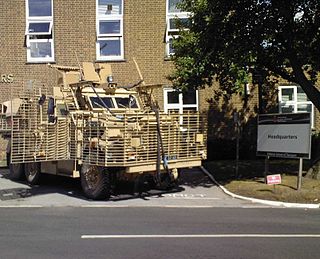 W
WThe Defence School of Transport (DST) is located at Normandy Barracks, Leconfield near Beverley, East Riding of Yorkshire in England.
 W
WFort George, is a large 18th-century fortress near Ardersier, to the north-east of Inverness in the Highland council area of Scotland. It was built to control the Scottish Highlands in the aftermath of the Jacobite rising of 1745, replacing a Fort George in Inverness constructed after the 1715 Jacobite rising to control the area. The current fortress has never been attacked and has remained in continuous use as a garrison.
 W
WGarelochhead Training Camp is a military training camp located near Garelochhead in Scotland.
 W
WThe Infantry Battle School, Brecon is a British Army training establishment at Dering Lines in Brecon, Wales.
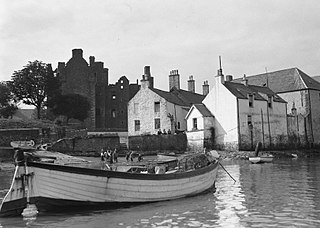 W
WKirkcudbright is a town and parish and a Royal Burgh from 1455 in Kirkcudbrightshire, of which it is traditionally the county town, within Dumfries and Galloway, Scotland.
 W
WKneller Hall is a Grade II listed mansion in Whitton, in the London Borough of Richmond upon Thames. It houses the Royal Military School of Music, training musicians for the British Army, which acquired the building in the mid-19th century. It is also home to the school's Museum of Army Music. The Army is scheduled to vacate the site in 2020.
 W
WLulworth Camp is a British Army base that is home to the Armoured Fighting Vehicle Gunnery School and runs the Lulworth Ranges on the southern coast of Dorset, England. It is part of Bovington Garrison and is located on the Purbeck Ridge between the villages of East and West Lulworth. The camp lies immediately southeast of the road junction between the B 3070 and B 3071 and about a mile northeast of Lulworth Cove.
 W
WThe Lulworth Ranges are military firing ranges located between Wareham and Lulworth in Dorset, England. They cover an area of more than 2,830 hectares, are leased in a rolling contract from the Weld Estate by the Ministry of Defence and are part of the Armoured Fighting Vehicles Gunnery School based at Lulworth Camp. The ranges were established in 1917.
 W
WThe Nesscliffe Training Area is a military training facility located near Nesscliffe in Shropshire.
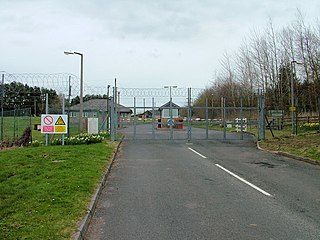 W
WThe Otterburn Army Training Estate (ATE) is a military training area near Otterburn, Northumberland, in northern England. It is owned by the UK's Ministry of Defence (MoD) and operated by Landmarc on contract from the MoD's Defence Infrastructure Organisation. The range and is used for training up to 30,000 soldiers per year. The site was established in 1911 and covers about 242 square kilometres (93 sq mi) of the southern Cheviot Hills.
 W
WPontrilas Army Training Area is a British Army training camp, located just north of the village of Ewyas Harold near to Pontrilas in Herefordshire, England. Originally developed pre-World War II by the Ministry of Defence (MoD) as an ammunition dump, it was served by the Golden Valley Railway.
 W
WThe Royal Army Medical College (RAMC) was located on a site south of the Tate Gallery on Millbank, in Westminster, London, overlooking the River Thames. The college moved from the site in 1999 and the buildings are now occupied by the Chelsea College of Arts.
 W
WThe Royal Military School of Music (RMSM) trains musicians for the British Army's twenty-two bands, as part of the Corps of Army Music. It is based at Kneller Hall, in Twickenham, west London; however, the Ministry of Defence has recently indicated that the site will be sold, and the school moved elsewhere.
 W
WThe Royal School of Artillery (RSA) is the principal training establishment for artillery warfare in the British Army. Established in 1915, it is located at Larkhill, Wiltshire, on the south edge of Salisbury Plain in the United Kingdom. The School is the primary training facility for Royal Artillery recruits, and is also home to the Gunnery Training Team.
 W
WThe Royal School of Military Engineering (RSME) Group provides a wide range of training for the British Army and Defence. This includes; Combat Engineers, Carpenters, Chartered Engineers, Musicians, Band Masters, Sniffer Dogs, Veterinary Technicians, Ammunition Experts, Bomb Disposal Operators, Counter Chemical Warfare experts as well as Command and Leadership.
 W
WRoyal School of Military Survey is a joint services survey training facility associated with the Corps of Royal Engineers (RE) but attached to the United Kingdom Defence Intelligence and Security Centre (DISC).
 W
WSalisbury Plain is a chalk plateau in the south western part of central southern England covering 300 square miles (780 km2). It is part of a system of chalk downlands throughout eastern and southern England formed by the rocks of the Chalk Group and largely lies within the county of Wiltshire, but stretches into Berkshire and Hampshire. The plain is famous for its rich archaeology, including Stonehenge, one of England's best known landmarks. Large areas are given over to military training and thus the sparsely populated plain is the biggest remaining area of calcareous grassland in northwest Europe. Additionally the plain has arable land, and a few small areas of beech trees and coniferous woodland. Its highest point is Easton Hill.
 W
WThe Royal Military Academy Sandhurst, commonly known simply as Sandhurst, is one of several military academies of the United Kingdom and is the British Army's initial officer training centre. It is located in the town of Sandhurst, Berkshire, though its ceremonial entrance is in Camberley, southwest of London. The Academy's stated aim is to be "the national centre of excellence for leadership". All British Army officers, including late-entry officers who were previously Warrant Officers, as well as other men and women from overseas, are trained at The Academy. Sandhurst is the British Army equivalent of the Britannia Royal Naval College and the Royal Air Force College Cranwell. Some graduates of these military academies receive further education at the Defence Academy of the United Kingdom.
 W
WThe Senior Officers' School was a British military establishment established in 1916 by Brigadier-General R.J. Kentish for the training of Commonwealth senior officers of all services in inter-service cooperation. It was established as part of a wider attempt by the British Army to create a coherent training plan for its officers.
 W
WThe Sennybridge Training Area (SENTA) is a UK Ministry of Defence military training area near the village of Sennybridge in Powys, Wales. It consists of approximately 31,000 acres of Ministry of Defence freehold land and 6,000 acres of land leased from Forest Enterprise.
 W
WStaff College, Camberley, Surrey, was a staff college for the British Army and the presidency armies of British India. It had its origins in the Royal Military College, High Wycombe founded in 1799, which in 1802 became the Senior Department of the new Royal Military College. In 1858 the name of the Senior Department was changed to "Staff College", and in 1870 this was separated from the Royal Military College. Apart from periods of closure during major wars, the Staff College continued to operate until 1997, when it was merged into the new Joint Services Command and Staff College. The equivalent in the Royal Navy was the Royal Naval Staff College, Greenwich and the equivalent in the Royal Air Force was the RAF Staff College, Bracknell.
 W
WStanford Training Area (STANTA), originally known as Stanford Battle Area, is a British Army training area situated in the English county of Norfolk. The area is approximately 30,000 acres (120 km2) in size; it is some 7 miles (11 km) north of the town of Thetford and 25 miles (40 km) south-west of the city of Norwich. The site is run by the Operational Training and Advisory Group (OPTAG).
 W
WStirling Lines is a British Army garrison in Credenhill, Herefordshire, the headquarters of the 22 Special Air Service Regiment with the site formerly a Royal Air Force non-flying station for training schools, RAF Credenhill.
 W
WStrone is a village, on the Cowal peninsula in Argyll and Bute in the Scottish Highlands at the point where the north shore of the Holy Loch becomes the west shore of the Firth of Clyde. The village lies within the Loch Lomond and The Trossachs National Park.
 W
WRAF Templeton is a former Royal Air Force station located near Templeton, Pembrokeshire, Wales which was operational between December 1942 and July 1945.
 W
WRAF Templeton is a former Royal Air Force station located near Templeton, Pembrokeshire, Wales which was operational between December 1942 and July 1945.
 W
WThe Warcop Training Area (WTA) is a UK Ministry of Defence military training area near the village of Warcop in Cumbria. Part of the Defence Training Estate, the area consists of approximately 24,000 acres (9,700 ha) of MoD freehold land.
 W
WWaterloo Lines, formerly known as the Land Warfare Centre, is a British Army barracks on Imber Road in Warminster, Wiltshire, England. It is currently home to a number of Army specialist training schools and a sizeable portion of the Headquarters Field Army, not to be confused with Army HQ in Andover.
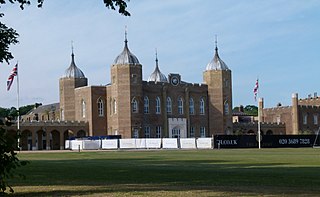 W
WThe Royal Military Academy (RMA) at Woolwich, in south-east London, was a British Army military academy for the training of commissioned officers of the Royal Artillery and Royal Engineers. It later also trained officers of the Royal Corps of Signals and other technical corps. RMA Woolwich was commonly known as "The Shop" because its first building was a converted workshop of the Woolwich Arsenal.
 W
WWyke Regis Training Area is an army training area primarily located in the parish and town of Chickerell, but near to the parish of Wyke Regis in neighbouring Weymouth, Dorset, England. The training area is located at three different sites. It is part of the Ministry of Defence's Defence Training Estate (DTE), which covers 240,000 hectares of land across the country, used to train armed forces. Although mainly used by the army, the training area has allowed an increasing amount of public use of both the climbing facilities and adventure training over the last few years. When the firing range is in use, signs, restriction gates and red flags are used to require walkers to divert inland around the back of the range before returning to the Coastal Path.
 W
WYoxter Training Camp is a British Army training area and camp owned by the Wessex Reserve Forces' and Cadets' Association and situated on the Mendip Hills in Somerset. It is between the villages of Charterhouse and Priddy. It is adjacent to the Chancellor's Farm biological Site of Special Scientific Interest, and the Somerset Wildlife Trust, Wessex RFCA, Ministry of Defence and Natural England work together to enable conservation grazing on the site.